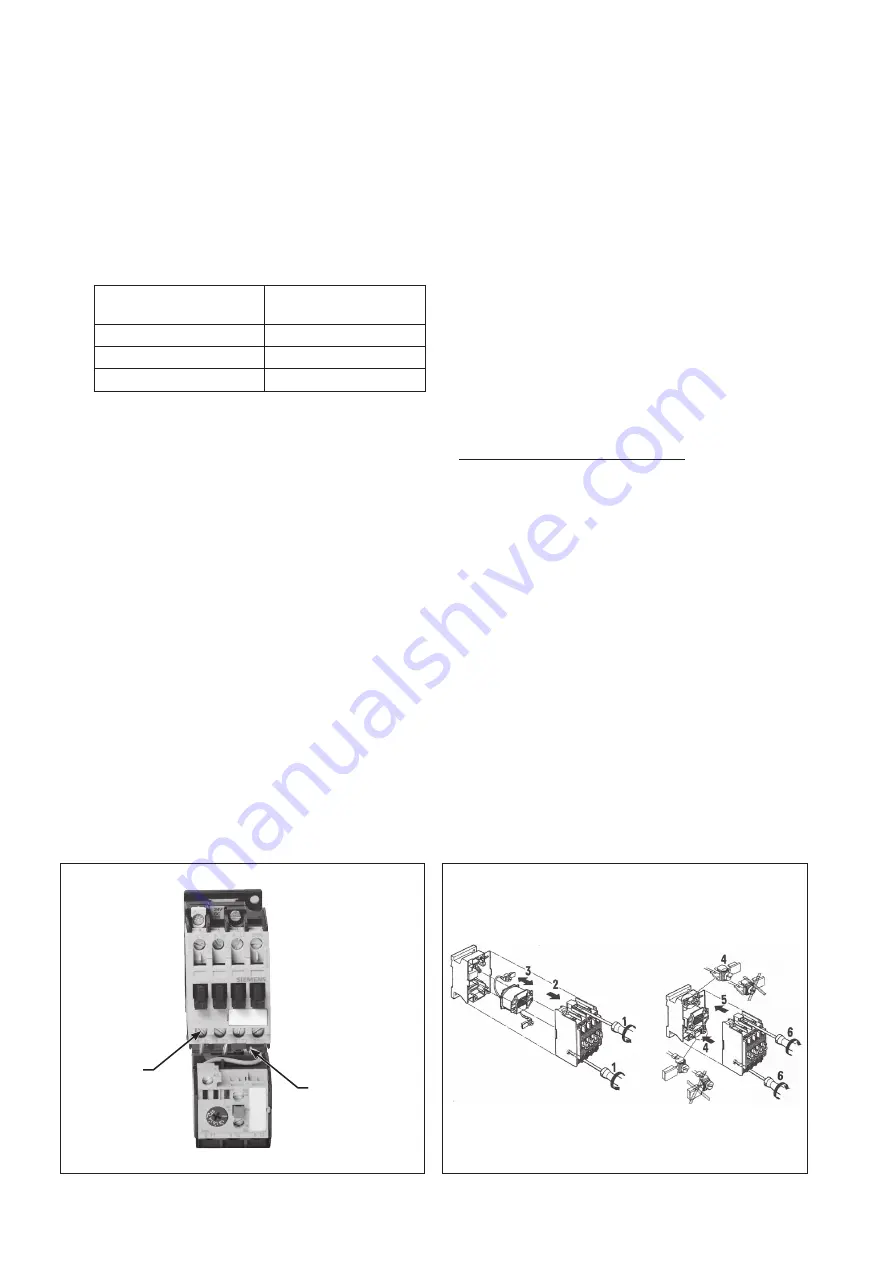
2
Installation:
• Open the door by unscrewing the door knob.
• Mount the starter enclosure vertically on a rigid surface
free from vibration. Refer Fig. 5.
• Remove the rubber Grommets for incoming and outgoing
cable connections. (Fig. 2).
• Connect incoming and outgoing cables as follows:
(Fig. 2)
– Select correct size of cable from Table 1.
– Remove approx. length of insulation as per following
table:
Length of insulation
removal (mm)
Cu cable size
(mm
2
)
10
10
6
4 and 2.5
5
1.5
– Pass the cable through proper cable gland to avoid
ingress of material.
– Connect the incoming supply cables to terminal
block TB1 (Fig. 2) and tighten the screws firmly (ref.
tightening torque from Table 2).
NOTE:
LMRA is set in Manual mode (Factory setting)
• Set the overload relay scale (Fig. 2) using proper
screwdriver as follows:
– Set the overload relay to rated current mentioned on
motor name plate.
– Press green button of the contact block CB1 (Fig. 2)
to start the motor and wait till it reaches to normal
speed. Reduce the overload relay settings till it trips.
– Set the overload relay at slightly higher value.
– Allow a reset time appr. 4 min. and reset the overload
relay manually.
– Restart the motor. If the relay does not trip, consider
the overload relay as properly set.
If it trips, set it at little higher value and recheck.
– Press the red knob (Fig. 2) on the overload relay to
stop the motor.
– Fix the door by screwing the knob.
Replacement of coil
Fig. 3: Contactor – Relay connection
Operation:
• Ensure the door is closed.
– Rotate the Latch away from OFF push button.
– Check the status of amber LED. Ensure that amber LED
is continuously ON and then only proceed.
– Switch ‘ON’ the starter by pressing the green push
button (marked ‘I’) (Fig. 1) on starter door.
– To Switch ‘OFF’ the starter press red push button
(marked
‘O’
) (Fig. 1) on the starter door.
• Reset Operation
– If the overload relay trips, Reset manually.
(Allow a reset time of approx. 4 min.)
Maintenance:
• Switch off the starter and put Latch on the OFF push
button, (marked ‘
O
’).
Disconnect the main supply by
switching OFF main switch before maintenance.
• Keep the interior dust free.
• Re-tighten the terminal screws from time to time.
• No maintenance is needed for overload relay.
Please do not open the overload relay.
• Replace the contactors / contacts of the contactors if they
were severely pitted or when only 40% of the original
contact tip remains.
(Contacts replacement possible only for 3TS33, 3TS34,
3TS35, 3TS36 contactors).
• Replacement of overload Relay
I. Disconnect the cable between Relay terminals T1, T2,
T3 and Outgoing Terminal Block TB2.
II. Loosen the outgoing terminals screws of contactor
(Fig. 3).
III. Disengage the relay terminals & hook from contactor.
IV. Take the overload relay of same range.
V. Connect & tighten the relay terminals (L1, L2, L3 to
the contactor terminals (T1, T2, T3).
VI. Ensure that the relay hook (Fig. 3) is engaged in the
slot of the contactor and slide the relay inwards till
the cover is flush with contactor ribs.
VII. Reconnect the disconnected Terminal block (TB2)
wires to relay and check the correctness of the starter
wiring by referring to the wiring diagram.
Hook on relay for
engagement
Contactor
outgoing terminals






















